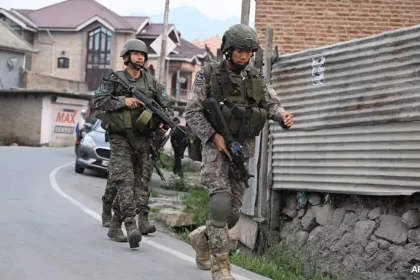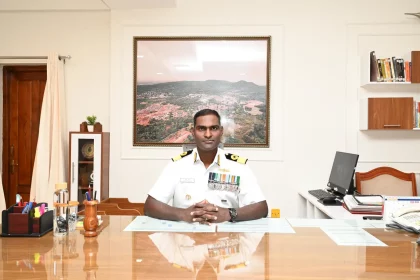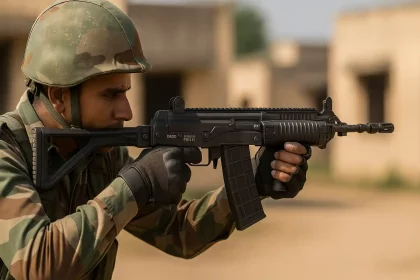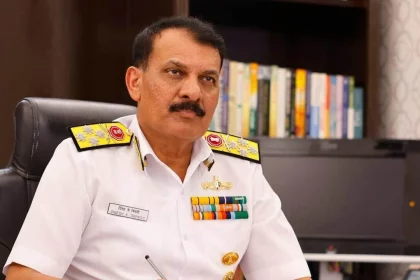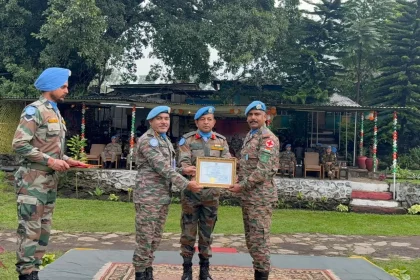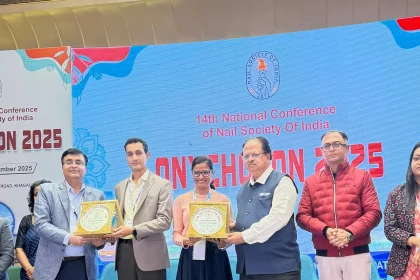India–Pakistan Conflict Due to Terrorist Activity Likely in 2026, Warns US Think Tank
Council on Foreign Relations warns of terrorism-driven escalation in South Asia amid fragile regional security and unresolved cross-border militancy.
Commodore Subhal Nathan Assumes Command of INS Zamorin at INA Ezhimala
Seasoned Gunnery specialist and NM (Gallantry) awardee takes charge of the Base Depot Ship supporting officer training at the Indian…
MoD Inks ₹4666 Crore Defence Contracts for CQB Carbines and Heavy Weight Torpedoes
₹2,770 crore CQB carbine deal boosts infantry firepower while ₹1,896 crore torpedo contract strengthens Navy’s underwater combat capability under Aatmanirbhar…
Woman Admiral Possible in Coming Years: Navy Chief Admiral Dinesh Kumar Tripathi
Inclusive policies, expanded roles for women, and indigenous naval strength signal a transformative era for the Indian Navy.
Colonel Rajesh W Adhau Receives SRSG Unit Appreciation for India Level II Plus Hospital at MONUSCO
Prestigious UN recognition honours Indian medical unit’s exceptional service and resilience in high-risk peacekeeping operations.
Major Rahul D Nair and Squadron Leader Diksha Garg Win National Postgraduate Dermatology Quiz at Onychocon 2025
AFMC Pune dermatology residents outshine teams nationwide, showcasing clinical excellence and academic rigor at Onychocon 2025.

